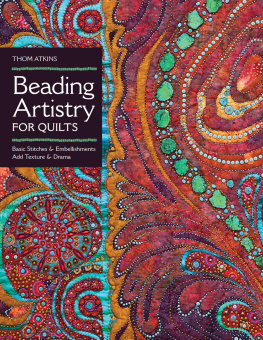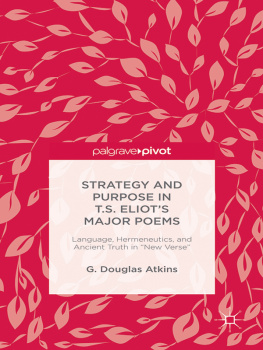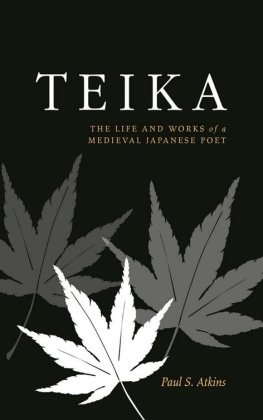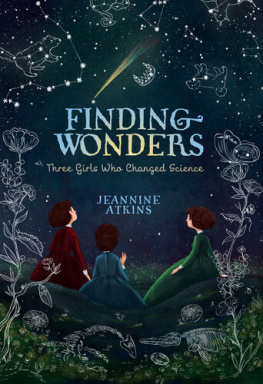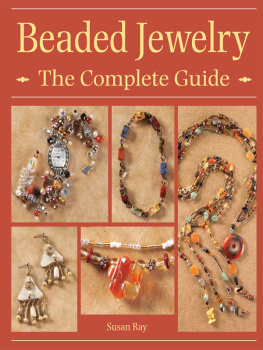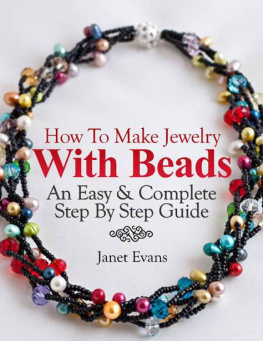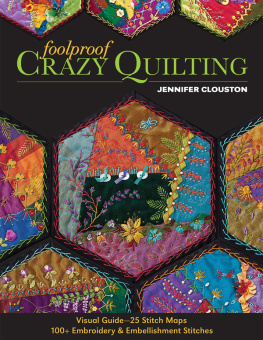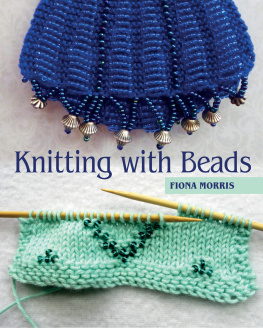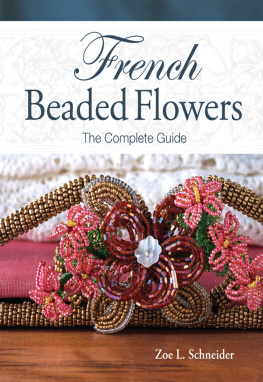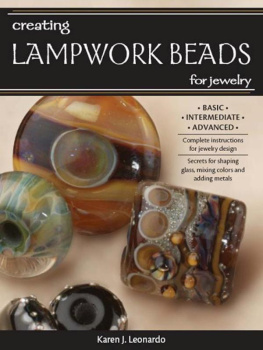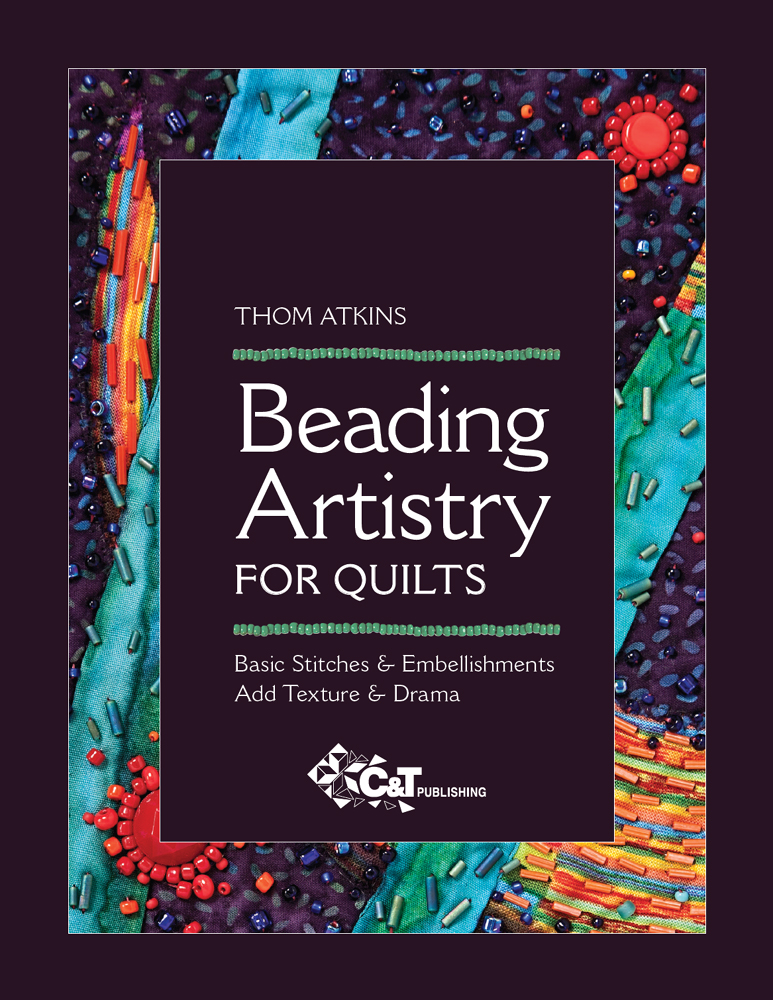
Dedication
I would like to dedicate this book to the four most important women in my life: my grandmother, Martha (Dede) Atkins; my mom, Ferne Cook; my sister, Robin Atkins; and my wife, Jennifer Chase, all of whom have had a hand in providing the tools to get me from this books inception to the reality of print.
Acknowledgments
During the year and a half we stayed with my grandparents after my fathers death, my grandmother taught my sister and me how to sew on a treadle sewing machine. This, for me, was the beginning of a long career of sticking things together. My mom and stepfather both encouraged me to look at things from the perspective of I dont know how to do that yet! rather than the usual I CANT! My sister, Robin, arrived in the world of beads by a whole different path and provided me with the basic stitches of bead embroidery, as well as a foundation of off-loom weaving techniques. My wife, Jennifer, has been a pillar of strength and support for all my artistic endeavors and is the one who provided a regular paycheck and health insurance so I could pursue less monetarily remunerative goals and provide us with the pretty things. I would also like to thank the ladies at C&T Publishing, who thought I had a book to write long before I realized I had enough to say.
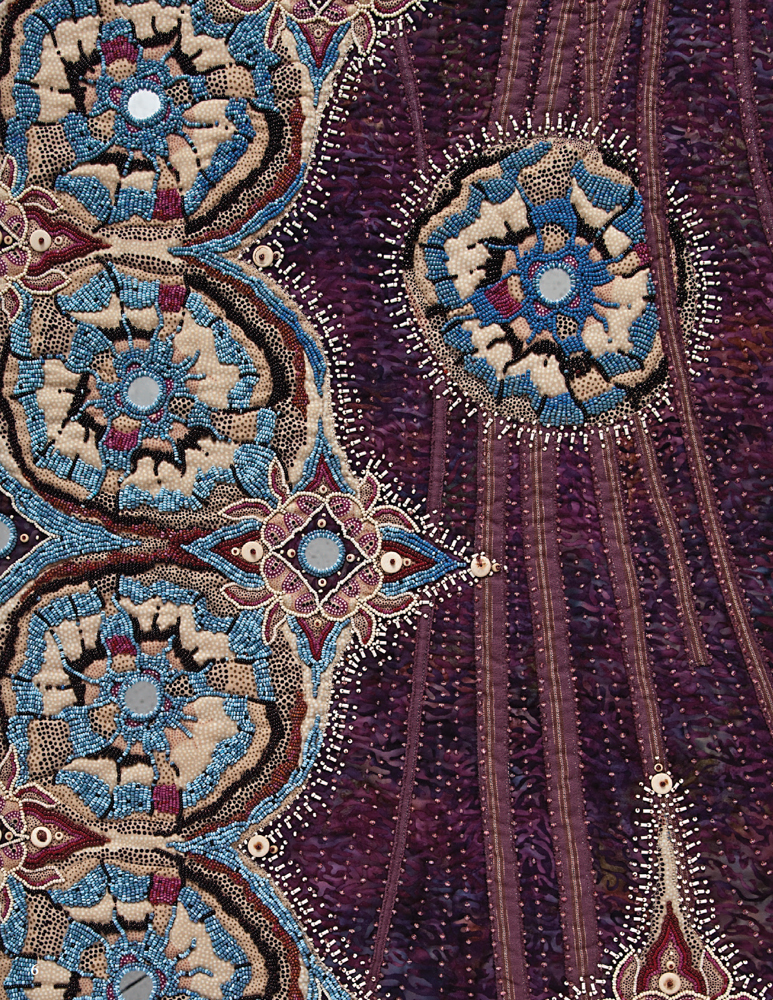
Introduction
Sewing beads onto quilts, for me, is a great deal more than just embellishment. My ultimate goal, for the past ten years or so, has been to find the balance between the fabric and the beads.
How I start a piece varies greatly. I may have a bolt of fabric leap off the shelf and scream, Take me home! I may see a particular bead or color of bead that sets me off, or I may have an image or idea I want to express. There are times when I start a piece and have no idea how Im going to use beads on it, knowing only that I will use them somewhere, somehow. There are times when I want a particular effect, like falling rain, which can be done beautifully with beads. Then I design the piece with that in mind, the beads forming the focal point over and above the design happening in the fabric. If one were to look at all the work Ive done in the past ten years, the most obvious continuity is in the use of the beads.
For me, my most valuable tool is the question, What would happen if I ? Encountering new techniques, such as netting capture, boiling polyester organza to produce permanent shapes, reverse appliqu, and even felting, provides grist for my creativity. These techniques often furnish me with a way to actually say something, rather than just creating something pretty. Once the technique has been explored, the fabric face created, the beads chosen, and beading patterns established, there comes a period of time where it is just the donkey work of finishing. Then, the beading becomes rather Zen-like, and I keep moving through what could be boring toward the goal of satisfying my curiosity, as I wonder, What is it going to look like? Will it look anything like what I saw in my mind?
My purpose in this book is to share not only the tools of how to sew beads onto a quilt, but also a bit about the whys. Being a very visual person who has great difficulty reading and understanding directions, let alone following them, I had somewell, lets say a lot ofreservations about writing a book of instructions; I would rather have just given you a great many pictures and illustrations. Yet I find that the written word may help with understanding where the pictures fall short.
We each have our own ways of processing information and then using it to create something that is uniquely ours. Making the leap from constructing something someone else has designed to creating something on our own is huge. I hope the information and techniques you find in this book will help you do just that.
1
Why Use Beads on Your Quilts?
Why use beads on a quilt? I would as well ask you, why sing, why dance, why write poetry or paint paintings? Ive been fascinated with beads ever since the early 70s when I managed a craft gallery and was gifted with some lovely African trade beads. I didnt know they were valuable then, only that they were beautiful. I took apart strands and made jewelry for myself and others. Later, I drilled holes in some shells I had gathered on Ocracoke Island, North Carolina, thereby making them into beads in the time-honored tradition. I still have a necklace from those shells, although I never wear it. But I digress. Beads do that to me.
Why quilt? Why sew together pieces of fabric to make a larger piece of fabric? Whatever your reason, the point is that the love of making quilts is rooted in fabric and thread and creating a whole out of pieces.
When you start, what do you start with? Is it the fabric color? The print? Is it a block pattern, or what you want to do with the block now that you know how to put it together? What is it that drives you to finish, at least the top of a quilt? The answers are as numerous as the number of people making quilts, and that, as we know, is a whole bunch.
And what about art quiltsnot so much why make art quilts, but what drives such quilts? Why do I want to make this particular quilt? precedes How do I construct it? Again, the answers are as numerous as the people making art quilts; it might be a technique, the fabric, an idea, a picture, a love of cows or watermelons, or any combination thereof.
Then, when the quilt top is sewn together, the question becomes, what now? How shall I quilt it? How shall I bind it? What kind of batting shall I use? What fabric shall I use for a backing? And then there is the question that often governs the answers to the others: What is it going to be used for?
This is where I get back to beads. Remember beads? I usually start from the bead end and not the quilt aspect when designing quilts. I enjoy sewing them onto fabric, as in bead embroidery. The New Century Dictionary defines the word embroider as to decorate with needle work, to adorn or embellish. The problem was that the style of bead embroidery I had first learned called for the whole design to be carried by the beads, and I would wind up covering most or all of the fabric with beads. It was not mere embellishment. And it was time consuming in the extreme. Sewing beads on quilts gave me more texture than regular flat bead embroidery and allowed me to leave areas of fabric exposed. When I looked at quilts that had beads sewn onto them, I saw little dabs of beads here and there. One had to get up very close to even see the beads. My quest became to find the balance between the fabric and the beads and to give both a voice in the design, rather than to use beads to embellish the design. Why? Because I liked beads, and I wanted a larger canvas to use them on. Having painted with watercolors and inks, with oils, and with acrylics, painting with beads was a logical step in making pictures, with fabric as the canvas.
Going back to choices for a moment, showcasing beads became my main reason for making small art quilts. Needle and thread, fabric and beads, handworkall working together to make something that didnt exist before. You might want your piece to say something as simple as Im pretty, or something very important to you. In the beginning, most of my pieces were driven by what was printed on the fabric. Now, I might augment the printed design with Sharpie waterproof pens, dyes, or paint first, but mostly I use beads to draw lines, create texture, and add sparkle.
Back to the original question: Why use beads? My answer is I love them! I love their infinite variety, size, shape, color, and finish, and what they can add to a surface. Why use plain stitching when you can use a bead with a color or finish that will add to the surface? Should you become a beadaholic like me, you may find yourself using beads for everything, when a piece of couched yarn or some machine top stitching would suffice. While were asking questions, why not ask, When do you stop? Answer: When youre done! or, more precisely, When youve reached the proper density of beads for that piece and have a balance between the beads and the fabric. Of course, there are other factors to be considered, such as when youve run out of time or patience or youve run out of beads.
Next page
